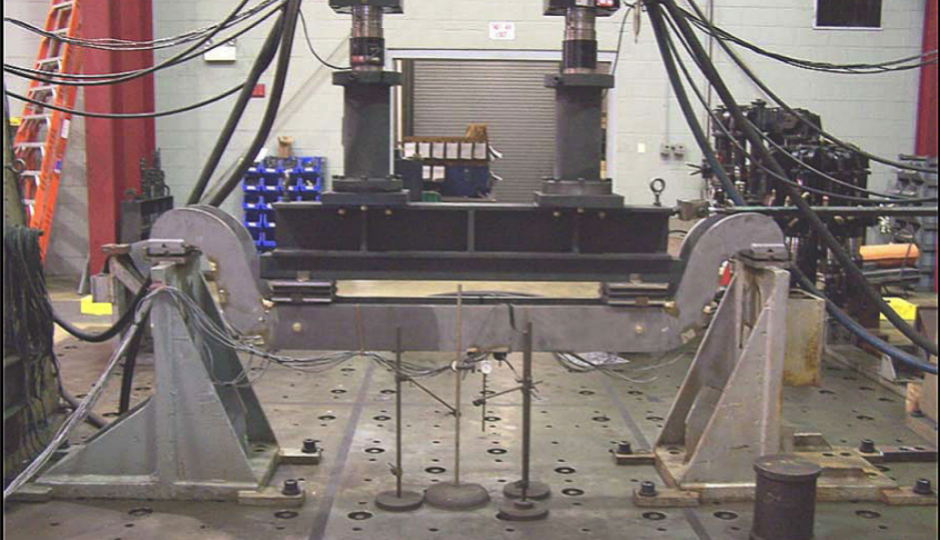Explainer: What SEPTA’s Inspectors Should Be Asking About Those Silverliner V Wheel Assemblies

According to both SEPTA and a veteran structural engineer, the original stress tests on the Silverliner V equalizer bars, shown here, may not have captured all the loads that could cause the part to fail at the welds. Photo | SEPTA
SEPTA and Hyundai Rotem have three possible options for returning the Silverliner V railcars to revenue service:
- Repair the damaged equalizer bars.
- Replace the damaged bars and attach the new ones to the existing trucks.
- Build all-new trucks with a different equalizer bar design.
According to General Manager Jeff Knueppel, the first option looks like it will be ruled out. But before it can be ruled out completely, and before SEPTA and Hyundai Rotem can figure out which of the other two options to pursue, they have to determine what caused the damaged equalizer bars crack and how they developed.
Knueppel explained at a July 3rd news conference that the stress fractures are located around the welds that join the equalizer bars to the bearing seats (the brackets atop the boxes that house the ball bearings around the axles, also called journal boxes). I asked Stephen Zilliacus, a retired structural engineer who spent most of his career examining metal fatigue failures on U.S. Navy ships, to explain how the fractures might have developed and what the sleuths that SEPTA and Hyundai Rotem have working on the case are looking for.
Welding involves turning three distinct pieces of metal into one through the application of heat to the place where the three meet. Two of the pieces are the parts to be joined, and the third is the metal being used to join them. Think of what happened here as akin to Krazy Gluing a handle onto a coffee mug only to have the handle break off again later.
“Welding is a tricky business,” Zilliacus said. The success of a weld depends on the amount of heat applied and the rate at which the pieces heat up and cool down, and if any of these are not exactly right, the weld will fail down the road.
“The problem a novice welder can have is not having the right temperature for the weld,” he said. “If you don’t have the proper heat, you don’t get the penetration of the weld metal into the parent metal. You can have a weld that looks good, but if you don’t get the right penetration, it won’t hold up.”
Zilliacus went on to explain that when joining two large pieces of metal like these, heating the pieces to be joined before welding is also necessary to ensure proper metal penetration. “If you don’t preheat the parts before welding, the heat gets sucked up” by the pieces to be joined. That means the welding metal won’t penetrate deep enough into the pieces.
“You also have to be careful with the cooling after the welding,” he said. “The cooling may have been too fast.”
Another question the sleuths should ask is, “Did [the welders] use the proper weld metal? Whatever welding rod they used has to be compatible with the parent metal in both the pieces to be joined.”
The possibility also exists that the tests conducted on the parts at the outset weren’t adequate enough to catch potential failure points. Originally, the builder conducted only static tests on the equalizer bars, where weight is applied vertically to a stationary part. Dynamic testing applies loads vertically and horizontally to simulate how weight is transferred through the parts as they move. Dynamic testing will be performed on any repairs or replacement parts.
SEPTA’s 596-page technical specifications document spelled out in detail the kind of materials to be used in making the parts, acceptable equalizer bar designs and tests to be performed on the first truck made and samples of others that followed. “There are several types of non-destructive tests that they can conduct on welds to locate cracks,” he said. Some of the methods Knueppel said would be used to inspect parts going forward, including the use of dye penetrant, were called for in the sample tests in the specifications.
Once everyone figures out the cause of the failures and the proper response, Zilliacus said there’s one more question to ask if a redesign is called for: “Would it be better to bolt [the parts] together than to weld it together? You can get high-strength bolts and add welds to them to keep them from coming loose.”
Follow Sandy Smith on Twitter.


